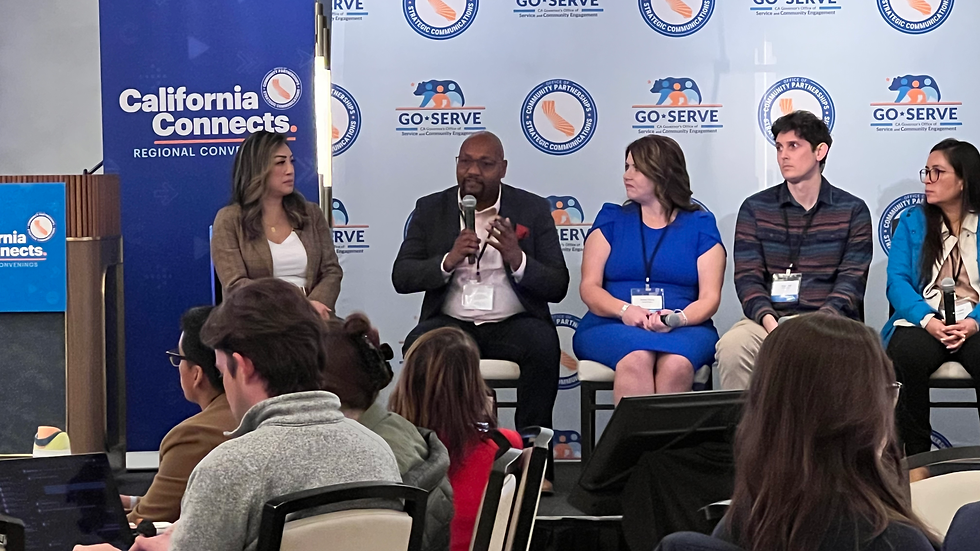NAACP Should Support Good Educational Models
- INFO-MD Staff

- Oct 12, 2016
- 3 min read

While the nation struggles with the seeming attack on Black men by law enforcement, it is important to recognize the value that a good education can have on the lives of people of all backgrounds.
So when there are successful education models that improve the educational trajectory of Black students, it is critical that we shine a positive light on them.
One such model that has shown great success for African American students across the country has been non-profit operated charter schools that focus on Black student achievement. This October, however, the National Board of the NAACP is considering a resolution calling for a moratorium on the expansion of charter schools.
The rationale for the resolution does not accurately reflect the realities in many charter schools that successfully serve African American students and other student of color in California, where the measure originated.
The state of California has the most charter public schools and charter public school students in the United States. In 2015-16, 1,228 charter schools served 572,752 students throughout the state.
A majority of those students would be students stuck in some of the state’s low-performing schools.
There has been tremendous evidence that shows that charter schools are serving minority and poor families well.
A study entitled “A step Up: How Charter Schools Provide Higher Levels of California Public University Access” found that charter schools are closing the University of California (UC) acceptance rate gap for under-represented student with African American and Latino charter school students almost twice as likely (19 percent) to apply to the UC as their traditional public school peers (11 percent).
Additionally, charter schools serving majorities of low-income students have the highest acceptance rates of all — 21 percent.
The acceptance rate at similar traditional public schools is only 11 percent. One study by the Center for Research on Education Outcomes at Stanford University found that charter schools do a better job teaching low-income students, minority students and students who are still learning English than traditional public schools.
Separate studies by the Center on Reinvention Public Education and Mathematica Policy Research have found that charter school students are more likely to graduate from high school, go on to college, stay in college, and have higher earnings in early adulthood.
The NAACP should understand that as public schools in California, charter schools can only exist if they are authorized by a publicly elected school district board of education or county board of education.
A few charter schools may also appeal to an appointed state board of education, but that is the same body that adopts regulations for all public schools in California.
In addition to being authorized by a publicly elected board, many charter schools also have an appointed board which conducts its business in accordance with the same state laws — the Brown Act, as publicly elected boards.
As California charter schools are public schools, they are publicly funded and must adhere to the state regulatory laws, oversight, audit requirements and dissemination of information about their operations.
Nearly all charter schools in California are operated by non-profits or school districts, except about 1 percent that are operated by for-profit organizations — a practice the California Charter Schools Association opposes.
Calling for a moratorium on privately managed charter schools, as the NAACP resolution does, paints charter schools led by non-profit organizations with the same brush as for-profit operators. That’s wrong.
Few would argue that all charter schools are perfect. But, the same can be said of traditional public schools where there have been state takeovers or schools placed on federal “program improvement” for years.
Charter schools do not have so many years to reach their goals. They face re-authorization determinations every three to five years.
By almost any measure — the National Assessment of Education Progress, Scholastic Aptitude Test, college admissions rates, college graduation rates — African Americans still fare worse than any other ethnic group in most traditional public schools. And yet, there are effective public schools serving African American students in the United States, including charter schools. California and the nation need to accelerate the replication of such schools, not curtail their growth.
The NAACP should consider evidence from knowledgeable educators and opinion makers who use research-based findings for their positions.
The venerable organization should focus on the results of effective schooling for students rather than defending policy positions that have more to do with adult issues rather than proven, effective student performance.
No policy should be established to retard the growth and replication of successful schools.








Comments